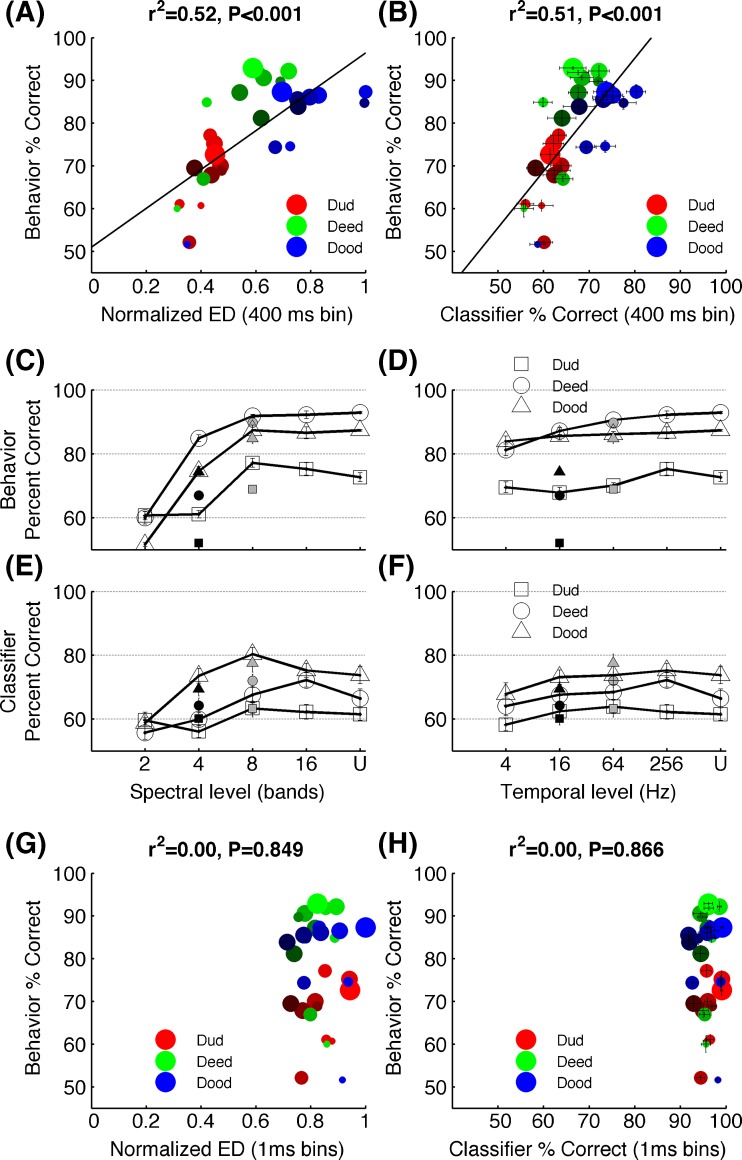FIG. 7.
Neural and behavioral correlates of vowel discrimination behavioral discrimination of vowels is significantly correlated with the neural differences estimated by the Euclidean distances between the spatial patterns generated in A1 (A) and the neural classifier based using the spike rate of the 400 ms duration (B). The behavioral discrimination patterns observed for the three vowel tasks under different levels of spectral (C) and temporal (D) degradation closely matched the neural classifier discrimination patterns (E) and (F). The open symbols in (C) and (E) indicate stimuli low-pass-filtered at 256 Hz, the gray symbols at 64 Hz, and the black symbols at 16 Hz. The open symbols of (D) and (F) indicate stimuli noise vocoded with 16 bands, the gray with 8 bands, and the black with 4 bands. For C through F, error bars indicate SE. Note that most error bars of C and D appear smaller than the symbols. The behavioral patterns of vowel discrimination was not correlated with the Euclidean distances between neurograms considering the precise spike timing information (G), or the neural classifier based on spike timing (H). For A, B, G, and H, the sizes of the symbols indicate spectral resolution where the largest shows the undegraded vowels and the brightness of the symbols indicates temporal resolution where the brightest shows undegraded vowels. U = undegraded.

